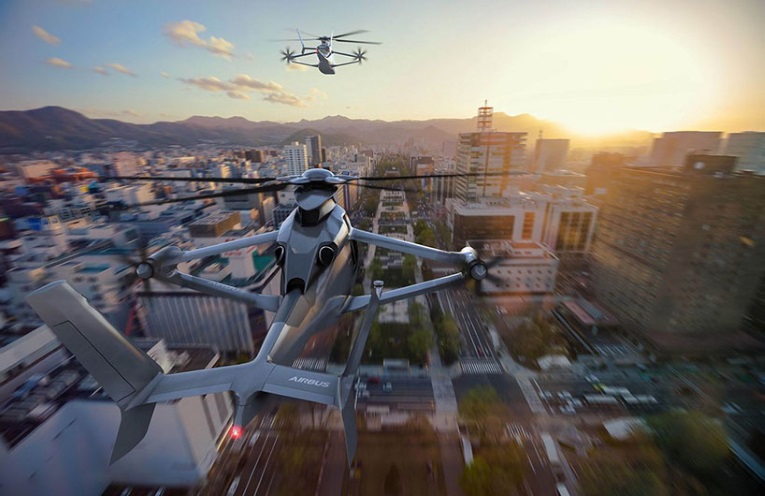at the paris air show, airbus helicopters unveils the aerodynamic configuration of the high speed demonstrator it is developing as part of the clean sky 2 european research programme. dubbed the ‘racer’, for ‘rapid and cost-effective rotorcraft‘, this concept demonstrator will incorporate an array of innovative features and will be optimized for a cruise speed of more than 250 mph (400 km/h). it aims to achieve the best in speed, cost-efficiency, sustainability and mission performance. final assembly of the demonstrator is expected to start in 2019, with a maiden flight the following year.
the airbus ‘racer’ concept demonstrator will be built around a simple architecture, ensuring safety and cost-efficiency. an innovative ‘box-wing’ design, optimized for aerodynamic efficiency, will provide lift in ‘cruise’ mode while isolating passengers during ground operations from the ‘pusher’ lateral rotors, which are designed to generate thrust in forward flight.
‘today we unveil our bold vision for the future of high-speed rotorcraft,’ comments guillaume faury, airbus helicopters CEO, at the paris air show 2017. ‘this new project, pulling together the skills and know-how of dozens of european partners through the clean sky 2 initiative, aims to bring increased speed and range at the right cost, thanks to a simple, safe and proven aerodynamic formula. it will pave the way for new time-sensitive services for 2030 and beyond, setting new benchmarks for high-speed helicopter transportation.’
optimized for performance and low acoustic signature, these lateral rotors as well as the main rotor will be driven by two ‘RTM322’ engines. an ‘eco mode’ will be tested by the engine manufacturer to demonstrate an electrically-powered ‘start and stop’ of one engine in flight, thus generating fuel savings and increasing range. the racer demonstrator will also benefit from a hybrid metallic-composite airframe, specifically designed for low weight and low recurring costs. it will be equipped with a new high voltage direct current electrical generation, which will significantly contribute to weight reduction.
building on the success of the self-funded ‘X3’ demonstrator, which validated the ‘compound’ aerodynamic configuration – a combination of a traditional main rotor and innovative lateral rotors – the racer project will bring this concept closer to an operational design and demonstrate its suitability for a wide spectrum of missions where increased speed and efficiency will bring significant added value for citizens and operators. this is especially the case for emergency medical services and search and rescue operations, as well as for public services, commercial air transport and private and business aviation.
